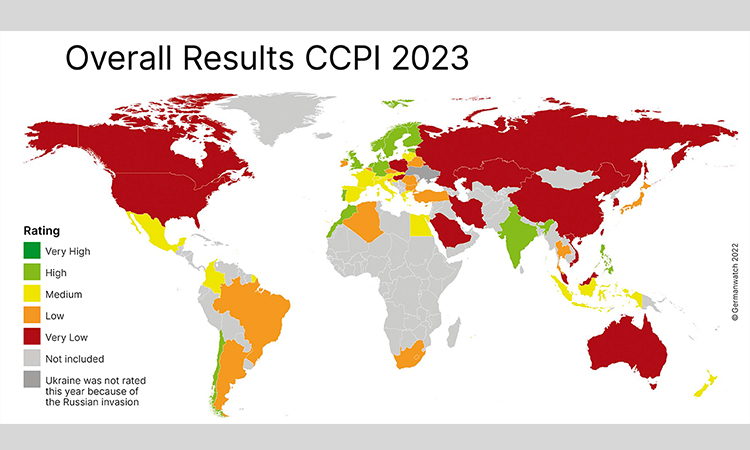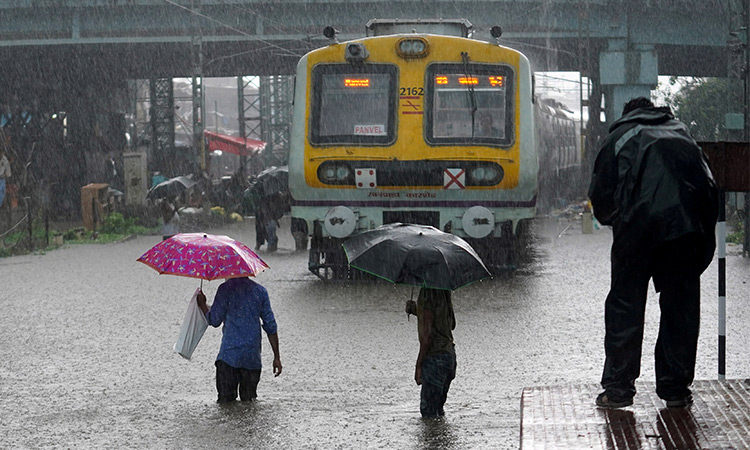Climate disasters take a toll on India

Meena Janardhan
Writer/Editor/Consultant. She has over 25 years of experience in the fields of environmental journalism and publishing.

Representational image.
Climate change got pushed into the background as the world struggled to deal with the pandemic. However, according to a report from the charity Christian Aid, the world paid a very high price for extreme weather in 2020.
The list is compiled by Christian Aid, a United Kingdom-based non-profit, and published in a report, ‘Counting the cost 2020: A year of climate breakdown’, launched on December 28. The report tracks 15 of the most destructive climate disasters of the year. Most of these estimates are based only on insured losses, and this means that the true financial costs would be higher. Together these climate disasters killed at least 3471 people while displacing nearly 14 million.
The list of 10 storms, floods and fires all cost at least $1.5billion – with nine of the 10 costing at least $5 billion. Six of the events took place in Asia, with floods in China and India causing damages of more than $40 billion. In the US, record hurricanes and wildfires caused some $60 billion in losses.
In India, super cyclone Amphan that hit India in May ranked fourth in the year’s global list of climate disasters that resulted in widespread financial damages. Then came the floods that affected many parts of the country between June and October rank among the 10 most ‘expensive’ extreme climate events the world saw in 2020.The value of the insured losses is estimated at $10 billion.
India is among the countries that are most vulnerable to the fallouts of climate change. Amphan, one of the strongest storms on record in the Bay of Bengal, with sustained wind speeds of 270 km per hour, hit both India and Bangladesh. The destruction caused by this cyclone cost both the countries – and Sri Lanka – around $13 billion in losses. Floods cost India around $10 billion and ranked fifth in the list.
The 2020 Atlantic hurricane season (June to November) was record-breaking, with 30 named storms. It caused at least 400 fatalities and a combined loss of $41 billion, ranking as the costliest disaster of 2020 on the Christian Aid report list.
China’s floods and wildfires in the West Coast of the United States made it to the second and third spots on the list. China experienced intense floods starting in June. The floods affected more than 35 million people, and left at least 278 dead or missing. The cost of the floods has been estimated at $32 billion, the report said.
The 2020 fire season on the west coast of the United States was one of the most destructive on record. Dozens of wildfires across California, Colorado, Arizona, Washington and Oregon burned more than 8 million acres of land and caused damages amounting to $20 billion. At least 42 people were killed by the fires, according to the report.
An unusually rainy monsoon season was associated with some of the most damaging storms in Asia, where some of the biggest losses were. Over a period of months, heavy flooding in India saw more than 2,000 deaths with millions of people displaced from their homes.
Africa was also on the receiving end of extreme events, with massive locust swarms ruining crops and vegetation to the tune of $8.5bn. The UN has linked these swarms to climate change, with unusually heavy rains in the Middle East and the Horn of Africa in recent years contributing to the locust outbreaks.
Europe also saw significant impacts when Storm Ciara swept through Ireland, the UK and several other countries in February. It resulted in 14 lives being lost and damages of $2.7billion.
While these were slow-moving disasters, some events did enormous damage in a short period of time. The Christian Aid report stresses that these figures for financial costs are likely an underestimate as they are based only on insured losses.
The report stresses that these extreme events highlight the need for urgent climate action. It is critical that countries commit to bold new targets ahead of the next climate conference scheduled to be held in Glasgow in November. To meet Paris targets, global carbon emissions must be halved in 10 years to 2030. This needs a 7.6% cut in emissions per year between 2019 and 2020. But, a recent report by the United Nations said that the emissions that need to be cut are constantly growing.







